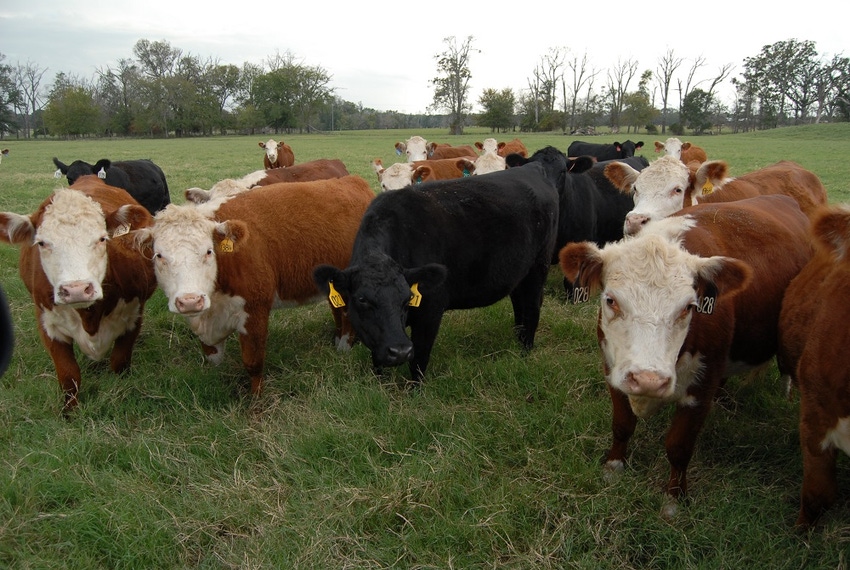
When I discussed the ideals of the 900-pound cow in my last blog, one thing I mentioned but didn't expound on was applying controlled stress to benefit the cattle.
I'll cover that and more in today's blog.
Allen Williams from Mississippi is a bright star in today’s cattle industry. His education, travel, and hands-on work is extensive and traverses five decades. Recently in conversation he mentioned the importance of controlled stress for a cow herd. Ray Bannister in eastern Montana speaks of stress and its necessity on a regular basis. All three of us are together on the subject and I’ll describe what we do at 499 Ranch. Remember that the three of us ranch in different parts of the country in totally different ecosystems.
The principles remain the same no matter the location. We all want healthy cattle that don’t require a bunch of needling. We all want cattle that are highly profitable on a per-acre basis and do the vast majority of the work with few inputs on our part. The secret is small-frame-score cattle that self-harvest their feed year around while nursing a calf close to 300 days per year.
The major principles we apply include stress and paying close attention to how, when, and to what extent the stress is applied.
The Japanese people have a long history of good health and small frame size. Following WWII their children out grew their school desks. The genetics had not changed but their food supply especially meat and increased consumption made a huge change in less than 15 years (just a fraction of a human generation time).
Our 900-pound cows would likely be 1,100-pound cows if we emptied enough feed bags or shoveled enough feed. If we lowered our stocking rate and allowed the girls to pick and choose at free-will they would get bigger. Our profits would leave with such management.
The major take-home message of controlled stress is to understand that the complete removal of stress results in loss of function and ability and a dependence on “big brother.” Big brother might be your bank account, a rich uncle, or some other unnecessary benefactor. Much of our industry has moved in this direction, which yields cattle that resemble the environment they live in.
Instead, we should use the ecosystem to form the cow herd.
We get accused of stunting our cattle and there is some truth in this accusation. But there is a lot of difference between stunting and starving. We do not own any starving cattle. Our cattle are happy cows that work hard at self-harvesting.
Such a system requires that calves be born in clean and hopefully tall grass that is mostly green. The mamas need to furnish two to three quarts of high-fat golden colostrum for a calf that’s healthy and up and nursing in 15 to 30 minutes.
Leaving calves on cows that never yield more than one gallon of milk per day gets everything going. When the growing season ends the cow should be pregnant and the calf is still nursing to the tune of a few ounces daily. This continues until the calves are 300 or more days of age. This program requires a trained, easy keeping cow. We do not have any big soggy calves in the early spring. We have calves that are ready for the spring grass flush and weaning.
Bull and steer calves and yearlings are run on new cuts of grass daily. Heifers are around 550 pounds when breeding in September and October. Any flushing with supplement is withdrawn by October 10.
Wintering is on grass that has been completely recovered for 70 or more days). Our winter standing forage is seldom as good as mediocre hay. It usually drops in quality until mid-February.
The key here is new cuts of forage daily and monitoring the cattle. We supplement cattle that are growing on a daily basis as needed to maintain one-half pound of growth and retain most of their condition. This is one of the “arts” of our business. Anyone can overfeed until the money runs out.
We like to see heifers calving in late June and early July that weigh 650 to 700 lbs. If we stay in the middle and use home grown yearling bulls as sires it should be normal for up 80% of these heifers to breed back within 90 days of calving. Yes, we do supplement the first-calf heifers. More importantly, we sell pairs or pregnant heifers that failed to breed back on time. They are close to what lots of producers want.
Our job is to provide fresh forage and move and monitor and plan and respond to what we see on a daily basis. Take a few weeks off at the wrong time and you can get burnt.
The result we shoot for is 80% second-calf heifers calving in a window of 375 days of their first calves. We might keep a yearling bull or two over. Everything else is sold as breeding bulls or 18- to 20-month-old yearling steers that were castrated (banded) four to eight weeks earlier.
I have noticed that there is a shortage of hard, true long yearling steers and most of the yards love them for all the right reasons.
Controlled stress applied with thought and planning and execution on a daily basis is a necessity.
In our business everything relates to and affects everything. There are a handful of natural model principles we have to learn and practice. There are a bunch of little details that we need to learn and care for.
The 900-pound cow is actually not far from your future if she is what you manage for.
About the Author(s)
You May Also Like






